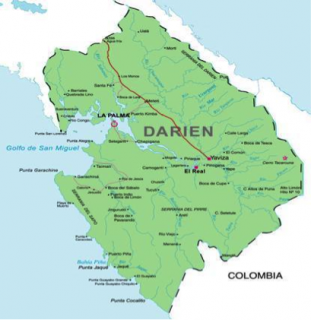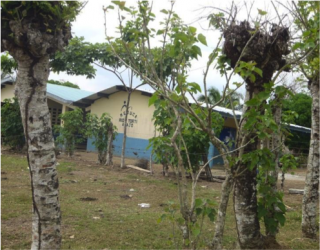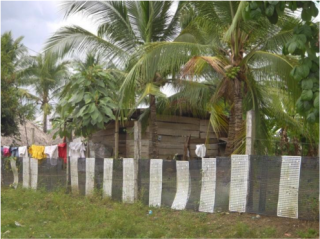Nicanor, Panama
![]()
![]()
![]()
![]()
![]()
![]()
![]() Click on Programs to learn more about their work in this community
Click on Programs to learn more about their work in this community
General Information

| Population* | 480 |
| Number of homes | 86 |
| Avg # of people per home | 5-6 |
| Electricity | Yes - in all parts of the community |
| Corregimiento | Meteti |
| District | Pinogana |
| Corresponding Health Center | Meteti |
| Distance from compounds | 1 hr from Torti |
| Road conditions | Excellent (5-10 minutes of dirt road) |
* Population does not reflect how many patients will be seen on medical
brigades as many people from surrounding communities come seeking
Medical Brigades medical attention.
Expressed Needs and Capacities
The top needs expressed by community members are to improve their latrines and aqueducts, and to increase the size of the school and the community’s waste disposal site. The town is well organized and has the following committees: a parents’ association, a water and health committee, and various religious groups. Community leaders demonstrate great willingness to collaborate with Global Brigades.
|
Nicanor has one primary school located in the center of town. There are 65 students and three teachers. The school has three classrooms, a kitchen, a cafeteria, and a library. The school provides a daily snack for the students. Children must travel to Metetí or Zapallal for secondary school. Eighty-seven percent of the community is literate.
|
 |
Nicanor has a gravity-based aqueduct water system that was originally constructed in the 1980s. The aqueduct however is old and was not built to meet the needs of the current population. As a result, not everyone in the community is connected to the current system. For the houses that are joined to it, the water runs almost every day. The water is chlorinated every four to five days, and the person responsible for this task changes every month. The town has a water committee consisting of seven members. Each household most pay a water fee of $1.50 a month.
Nicanor does not have a Centro de Salud (health center) in the town. People must travel to Metetí, which can be reached in ten minutes by bus. There is one nurse that lives in the town, but there are no other medical assistants or midwives within the community. The most common illnesses in Nicanor are the cold, parasites, the cough, and diarrhea. Members receive dental access only when medical/dental brigades set up their temporary clinics in this community. In addition to Global Brigades, a medical mission group from a church comes once every October.
Ninety-five percent of the community have latrines and 90% have cement floors. The community has never received any kind of outside health project.
The most common forms of livelihood amongst men are agriculture, raising livestock, and unskilled labor. The women usually take care of the home or work in agriculture. The main crops produced in Nicanor are corn and rice. Within the town there are a few small grocery stories. Inside the community, no access to credit exists, however, in the neighboring community of Meteti there is a National Bank that distributes loans. Around five to ten percent of the community has access to credit. The community has never received any form of business education or workshops.
|
The community has never had any waste management education or reforestation project. The population buries or burns their trash in order to dispose of it. As of November 2011, there was no environmental committee in the community.
|
 |
Nicanor has no lawyer within the town, but residents can travel to Meteti to access legal services. The main types of legal conflicts are over land titles and family issues. Ten to twenty percent of the community have land titles.
The community follows the general administrative government structure of Panama.
None.
Medical/Dental is currently the only program working in Nicanor.
Source of information: Key informant interview
Date of interview: November 8th, 2011
Last updated: January24th, 2013